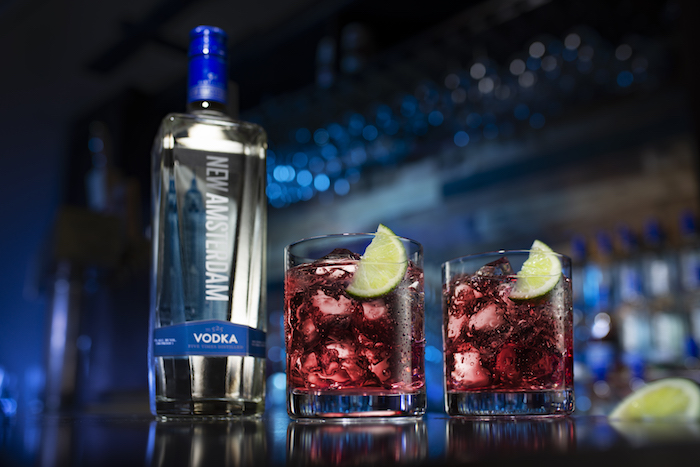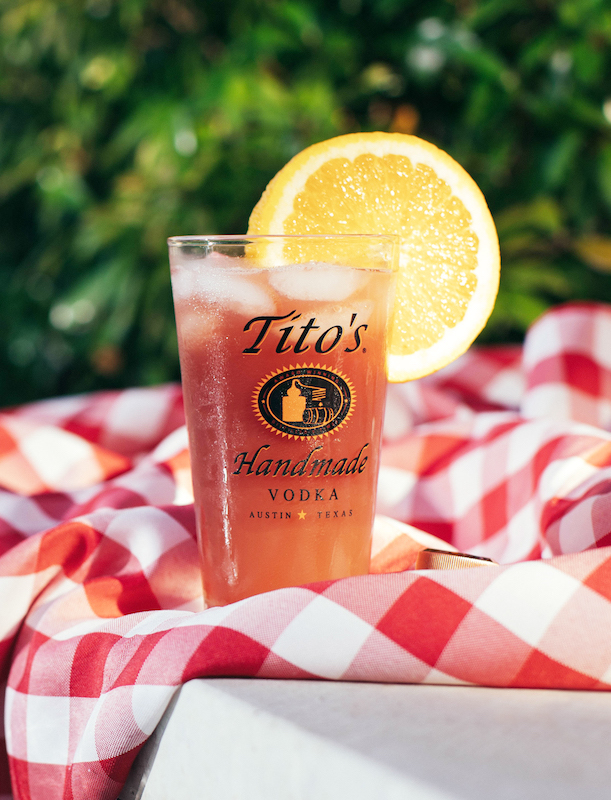
Vodka sales soared in the U.S. last year as Americans isolated by the Covid-19 pandemic compensated for on-premise closures by purchasing for home. Case volume was up nearly universally, according to Impact Databank, with numerous brands eliminating years of volume decay in 2020. Among the 20 vodka brands above 1 million cases in the U.S., twelve saw growth last year. Among those that lost ground, none lost more than 4% of their volume.
The top 20 brands reached a cumulative 61.5 million cases in the U.S., up 6.5% and nearly 4 million cases from 2019. Million-case brands have added 9 million cases since 2015 and have more than doubled in volume over the last 15 years. Looking at the category as a whole, U.S. vodka sales broke 80 million cases last year for the first time ever, totaling 81.1 million. The last 20 years have been good to the category as it grew from a base of 37 million cases at the turn of the millennium to reach its current heights.

A Single Leader
No brand had a better 2020 than the best-selling label in the U.S. After years of expectations, Tito’s vodka continued its seemingly unstoppable ascent and pulled away as the undisputed No.-1 vodka by volume. The Texas-produced spirit, from Fifth Generation, has sustained growth around 20% for years on its single, unflavored SKU and finished 2019 in a dead heat with Smirnoff for the top vodka brand in the U.S. at 8.8 million cases. Only an unprecedented dropoff could have stalled its climb to the top but that did not come. Instead, Tito’s rose another 18%, sustaining its double-digit growth and crossing the 10 million-case mark, totalling approximately 10.4 million cases in 2020.
The achievement caps a 15-year journey. From 100,000 cases in 2005, Tito’s advanced only to 370,000 by 2010, after which it began to gain traction. By 2015 it had grown past 3 million cases, at which point momentum took hold. The brand has added 7 million cases in the last five years, according to Impact Databank.
“The vodka category comes down to one brand and you know which one I’m talking about,” says Jess Bailes, president of Florida-based ABC Fine Wine & Spirits. “Tito’s really is a phenomenal brand—right time, right place, right marketing plan. I’ve been doing this since 1978 so I’ve gotten to see a lot of great brands come along, but Tito’s is different—everybody seems to be migrating in that direction.”
Despite losing its spot as the top vodka in the U.S., Diageo’s Smirnoff also had a strong 2020. After years of incremental losses, Smirnoff reversed its fortunes and expanded by 1.5%, totaling 8.93 million cases last year. The brand’s recent success is tied to its innovations. Smirnoff saw a solid rollout for offshoot Smirnoff Zero Sugar Infusions in May 2019, and recently expanded its sweet and spicy Smirnoff Tamarind into 15 new markets across the U.S. Smirnoff also extended its presence in the booming seltzer category last year with the launch of Smirnoff Seltzer Red, White, and Berry last spring. The seltzer label now boasts ten flavors including Piña Colada, Raspberry Rose, and Berry Lemonade, as well as newcomers Blackberry and Blood Orange.
E. & J. Distillers’ vodka operations also growing thanks to its innovations, including in RTDs. Its New Amsterdam label had an explosive 2020, adding more than 1 million cases last year to rank No. 3 overall at 6.1 million cases, according to Impact Databank. The brand’s Pink Whitney offshoot has jumped out of the gate since launching in 2019, and is estimated at around 800,000 cases for 2020. In addition to New Amsterdam, Gallo’s vodka operations now also include High Noon Sun Sips, a pre-mixed cocktail brand made with vodka. “With High Noon, we have a tiger by the tail,” says E. &. J. Gallo head of spirits Britt West. “We saw an opportunity, by using a vodka base and real fruit juice, to attract a consumer who’s willing to trade up to a premium offering. Almost 10% of any category is going to be premium, and hard seltzer is already a very big category, so we’ll be happy to have that premium end.”

Adapting Strategies
The pandemic has proved disruptive to many aspects of life, but luckily spirits producers have been able to adapt their operations to continue feeding supply. “While the facilities where we produce vodka have remained operational, the health and well-being of our employees is our top priority and as such we have stringent safety protocols in place, including heightened sanitation measures and restrictions on movement to and from our sites,” says Jim Ruane, vice president of vodka marketing at Diageo North America. “We’ve fundamentally changed the way we work, and that includes adjusting our creative and the messages we’re sharing, reallocating resources toward at-home occasions as the business shifted from on-premise to off-premise, and increasing our focus on e-commerce.”
Diageo is also working to help those hardest hit in the on-premise sector. “We have also been putting energy and resources into how we give back to those who have been particularly hard hit by the current situation,” Ruane notes. “With initiatives like Tips from Home, a make-it-yourself portfolio-wide mixology series and social pledge movement, we were able to donate directly to the USGB Bartender Emergency Assistance Fund.” And Ketel One, in particular introduced #MarvelousMondays under the Tips from Home umbrella, a virtual industry series for bartenders, by bartenders, focused on education, which allowed the bartender community to connect. The Netherlands-based brand kept its upward momentum in 2020, increasing 9% to 2.6 million cases. Ketel One continues to get a major boost from the success of Ketel One Botanical, its 30% abv flavored line extension.

Online Focus
Elsewhere, No.-4 ranked Svedka, from Constellation Brands, chugged along, as it reached 4.73 million cases. That was good for 3.9% growth, in line with recent years. Sazerac, meanwhile, had four brands in the top 20. Its workhorse continues to be Platinum 7X, which grew by 12.5% last year. That addition was a slight acceleration over its 2019 growth, and it closed 2020 at 1.85 million cases, approximately double its volume five years ago. It ranks third in growth since 2015, behind Tito’s and New Amsterdam, having added 880,000 cases on 13.8% average annual compound growth.
Bacardi’s Grey Goose reversed its fortunes in 2020, more than wiping out its 2019 losses. The French brand grew 3.5% last year, climbing to 2.31 million cases. As a super-premium label, its recovery points to the indominatability of the premiumization trend even amid the volatile conditions of the last year.

“While we do face the challenges that pertain to the vodka category as a whole, we’re continuing to highlight the quality credentials that set us apart and help us transcend the category,” says vice president of global marketing Martin de Dreuille. “We’ve also made huge strides in our digital presence with a new website and streamlined social channels. We’re going to continue enhancing and sharpening our social content, especially video, and continue to drive more personalized one-to-one communications with our consumers. We’re very focused on original content that accentuates our versatility in order to inspire consumers to consider Grey Goose outside of the traditional serves.”
Beyond social media, the super-premium is doubling down online with a focus on e-commerce, de Dreuille notes. “E-commerce, and particularly social commerce, is a huge opportunity for future growth,” he says. “Online shopping has provided unprecedented convenience, and as 67% of our target consumers prefer to shop online, we are going to be focusing in this area to make the experience quicker and more seamless.”
But while Smirnoff and Ketel One continue seeing gains, Cîroc, Diageo’s most troubled brand in the top 20, simply made progress toward stabilizing its performance. While the mass misery and boredom of the pandemic was enough to push most brands toward growth, some merely lost less ground than in years past. For Cîroc, which was at 1.35 million cases in 2020, that meant closing losses to only 2.5%, better than 5% the previous year.
Like Diageo, Heaven Hill has also been working to support those impacted most by the pandemic, both in philanthropic efforts as well as by bringing convivial experiences to its audience—even though in-person events have been impossible. It put on a “Mix with Music” live series on Instagram that highlighted up-and-coming artists and supported hospitality and entertainment professionals affected by the pandemic. Its charity efforts included pledging $400,000 to a variety of organizations and funds that support employee communities and hospitality workers in general, and the company has been producing hand sanitizer at its Deep Eddy facility in Texas. Deep Eddy grew 5% last year, rising to 1.47 million cases, in part thanks to its success with flavored offerings. “Deep Eddy vodka entered its tenth anniversary this year as one of the fastest-growing premium vodkas,” said Heaven Hill group product director Reid Hafer, noting that Deep Eddy Lemon in particular had a strong 2020. “Deep Eddy is the exception to the rule when it comes to flavors, which otherwise are seeing a decline or softness.”

Bailes of ABC echoes this e-commerce focus. When the on-premise shut down in Florida last March, ABC sprang into action, implementing new procedures. “We’d spent a lot of money getting prepared for this digital world we live in now,” Bailes says. “So we were ready for curbside pick-up and contactless business, and as a result we were up 40% basically overnight.”
ABC has maintained its contactless options over the course of the year and Bailes says the chain has cemented itself within the business. “We’ve enjoyed a huge boost in online sales, whether it be delivery or curbside pick-up,” he says, noting that while Tito’s reigns supreme, brands like Grey Goose and Absolut are showing strength. Pernod Ricard’s Absolut hit an even 3.5 million cases, up 2.5% last year, according to Impact Databank. The brand’s 2020 gain was a mirror image of its 2019 loss, and may mark a sought-after turnaround for the brand. Its offshoot Absolut Juice, at 35% abv, has been a winner and has helped stabilize overall performance. Campari America’s Skyy, however, was flat last year, remaining at 2.49 million cases.
And though many brands reversed their fortunes in 2020, some still fell short. Both Seagram’s, from Infinium Spirits, and UV, from Phillips Distilling saw volume declines. Seagram’s fell 1.4% to 1.33 million cases. UV, meanwhile, dropped half a percentage point, staying just above the million-case mark at 1.1 million cases. McCormick Distilling Co.’s eponymous brand also fell somewhat, dropping 4% to just above 1.5 million cases. Stoli Group’s Stolichnaya accelerated. From 3% growth in 2019 it climbed to 6.5% in 2020, ending the year just shy of 2 million cases. It has now essentially returned to its volume from 2005. Finally, Beam Suntory’s Pinnacle brand advanced 1% to 2.44 million cases. But no matter a slight increase or a major gain, vodka reminded the spirits world of its staying power last year as consumers kept to their homes.